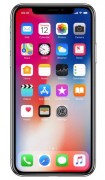What does the new iPhone X mean for mobile banking?
![]() Mobile banking is nothing without mobiles, and as Apple leads the way in innovation it provides opportunities for banks to do things differently too.
Mobile banking is nothing without mobiles, and as Apple leads the way in innovation it provides opportunities for banks to do things differently too.
So, with the launch of the iPhone X, what is next for mobile banking in a world that can’t get enough of phone upgrades? Kirsty Cooke, head of marketing at Mapa Research (Banking Technology‘s sister company), investigates.
We’ve been banging on about the importance of using native device features for a while. That is, we believe customers are more likely to use and enjoy using a particular channel if there are specific benefits to doing so. If the mobile experience is like the desktop one but smaller, customers may just use their computers – and therefore have to wait until they are at work or at home – to perform banking tasks.
With technology companies making our lives easier, by making everyday processes faster and more pleasant, it won’t be long (hopefully) until banking catches up.
The iPhone X (pronounced “ten”, Romans) will hit shops in November this year, and has been touted as the biggest technological advancement since sliced bread/the first iPhone.
The most noticeable improvement is the display. It’s all over the phone. So much so that the Home button is gone – and with it, Touch ID for unlocking. Now, it’s all about Face ID, the facial recognition system that will work wonderfully since the camera is oh-so-powerful and the tech means it can recognise you in the dark, with glasses on, and only when it’s really you (and you are paying attention). Secure. It will replace Touch ID for Apple Pay purchases too.
Mapa has seen Touch ID flourish amongst the many providers we monitor – indeed, the option to access a banking app with a thumbprint is now considered a “hygiene factor” due to its prevalence. As Face ID is arguably more secure without requiring any additional steps, will banks adopt it?
The question is really about consumers. Joe Public isn’t sure about the old Face ID thing beyond unlocking their phone. More than 40% of Apple iOS users in the US (surveyed by Juniper Research) consider themselves unlikely to use facial recognition as a payment security technology – 74% were in favour of fingerprint authentication; 62% voice. Of course, the US has taken to contactless less enthusiastically, with UK usage increasing far more – 12% compared to 2% – over the year.
This survey also suggested that people who don’t already use OEM-pay services are not particularly likely to start.
The iPhone X is pricey enough that we don’t see mass adoption of this new technology being particularly forceful. However, with this model being a supposed blueprint for the future, it is likely that this will really push facial recognition to the forefront of biometric security innovations within banks.
 Display and augmented reality (AR)
Display and augmented reality (AR)
As well as a higher resolution, better performing screen lending the chance to improve the visuals within any given banking app – super slick calculators anyone? – the iPhone X has seemingly been designed for a better augmented reality experience.
To quote Mac Rumours, this is due to “the individually calibrated cameras, a new accelerometer and gyroscope, tuning for ARKit, and the powerful A11 chip”. Sure. As we’ve argued before, the potential is there to make visiting a virtual branch as good if not better (and certainly lower on operating costs for the provider) than visiting a real one. Could this time be soon?
Here are a few more updates that come from the newest operating system rather than the device itself:
- Built-in QR code reader
File under “boring but important”, the new operating system will now let you scan QR codes without needing a third party app. This is good news for payments, which bizarrely seems to be resurrecting the square barcode as a quicker way to transact. In fact, despite changes to the NFC chip in the new iPhone X making it usable for more than just Apple Pay, the device is still limited in those regards – so QR codes won’t be going away any time soon. Read more.
- Payments with Apple Pay Cash
With a new operating system – iOS11 was released 19 September 2017 – comes new features even to those who haven’t upgraded their device.
One such feature is Apple Pay Cash. Set to arrive later this year, Apple Pay Cash allows users to send and receive money from friends and family quickly, easily and securely through iMessage (Apple’s instant messaging service). The interesting/worrying part for banks is that Apple is also releasing the “Apple Pay Cash Card”, where all these new virtual payments will be stored, competing with other card providers for prominence within its own Apple Wallet.
Those familiar with the US P2P payment provider Venmo will notice similarities between it and Apple Pay Cash. By launching its own P2P payments service, Apple has cut out the middle man, threatening third-party P2P platforms, while its decision to include Apple Pay Cash Cards indicates a potential desire to step further into the financial services space.
With every new phone (or at least, the best of the bunch) comes a gradual but perceptible shift in how consumers behave. As screens are getting bigger and more radiant, many desktop tasks shift to mobile. As phones can withstand more, and be charged more easily, they are relied upon for increasingly important things. And as customers fall in love with these all-in-one entertainment vessels, brands need to deliver not just a serviceable but a phenomenal mobile experience.
The article was first published on the Mapa Research website.












































